Beneficial effects of two fantastic bio-actives: Thymol and Carvacrol - Part 1
Aromatic and intensive taste, a spicy fragrance and very beautiful to look at as a plant - this is as we know an extremely popular spice plant, which pizza and pasta can hardly do without. And if you love the Mediterranean cuisine, there is probably no way around it. So, obviously, we are talking about oregano. But, of course, we will not only talk about its qualities as a spice. Its aromatic substances and ingredients have much more to offer and have been used successfully in food and feed industry for years.
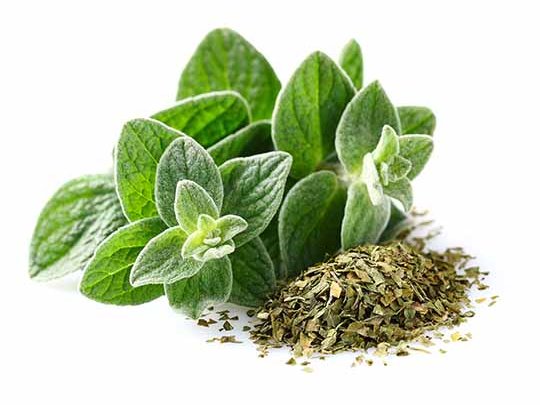
A little bit of history
Oregano originates from the Mediterranean region. The intensity of its aroma depends on the location, climate, and soil conditions. The more barren and dry the soil, and the hotter the weather, the stronger its flavor.
Unlike many other herbs, drying is the best way to preserve oregano. Probably, it’s also this dried form in which you commonly face oregano when using it as kitchen spice. Of course, the - albeit gentle – drying process may lead to losses in aroma and probably effectiveness, and yet, oregano and its precious compounds have been used for various purposes already for thousands of years
In a nutshell
| Botanical name | Origanum vulgare |
|---|---|
| Plant family | Lamiaceae (Mint family) |
| Blooming period | July - September |
| Harvest | all season |
| Habitat | likes warm, sunny regions with nutrient-poor and rather dry soils |
| Growth height | up to 65cm |
| Leaves | • small, and usually do not grow larger than 4 cm, ovate and dotted on the bottom side • strongly visible leaf veining on the bottom side |
| Bloom | • white, pale pink or purple colored • consist of four stamens, two carpels, five petals and five sepals with sepal teeth |
| Application | as spice and medicinal herb |
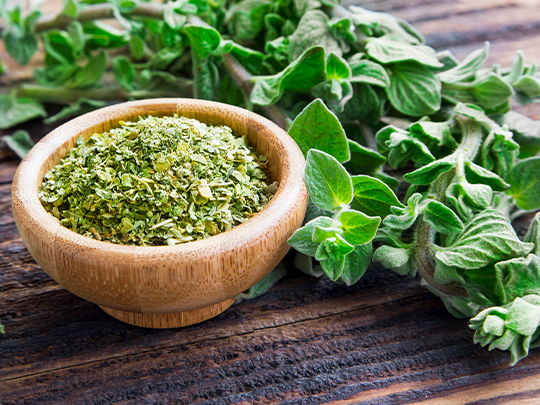
In ancient Egypt, thyme preparations containing thymol and carvacrol were used to preserve mummies due to their bactericidal and fungicidal properties.
As typical Mediterranean herb, oregano is native to the southern region. Since the 17th century it has gained popularity, especially as herb, and is common in Central Europe, North America, and parts of the Near East today. Above, it is cultivated and used in warm and temperate climates worldwide.
In the role of a medicinal plant, it was already used by the ancient Greeks, among others to counteract disorders of the gastrointestinal tract, fungal diseases or bronchitis. The name oregano also comes from the Greek language (Oros = mountain and Gonos = jewel), thus meaning "jewel of the mountains". Though it is to say that this derivation is solely based on folk etymology and therefor probably not completely clear regarding its origin. Anyway, we think it’s a suitable expression and sounds unique and powerful.
Powerful
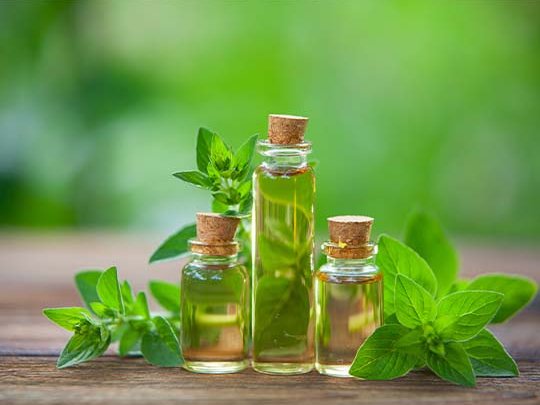
And that’s what oregano and it's main components are: powerful. A reason why this herb and especially its essential oils, rich in mono- and sesquiterpenes have been used for many years in human and animal for various therapeutic properties, such as antimicrobial (1,2,3,), antioxidant (4,2,5), anti-inflammatory (2,6,7), or antiviral (5), just to name some of them.
For now, we will just focus on the probably most important aspects, represented by its antimicrobial and antioxidative effects.
The qualitative-quantitative composition of the various chemical compounds in essential oils is largely responsible for the antimicrobial mode of action (8). In other words, not only the presence of certain compounds but also the proportion and quantity in which they are present determines the activity.
Did you know?
Did you know that the aroma compounds thymol and carvacrol make the Mediterranean cuisine so tasty?
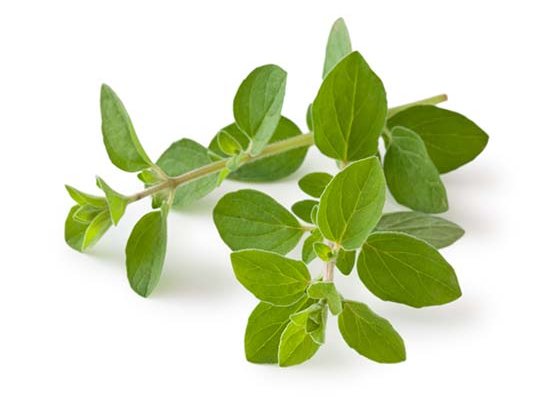
The most important compounds in oregano responsible for taste, smell and many of its other effects are thymol and carvacrol. Both are found in high amounts in the EO from oregano, which has been one of the most widely studied EO (5). Their great effects have pushed them into interest for use in the feed to food chain, including the research on their potential in animal nutrition. In view of spoilage microorganisms, natural antimicrobials, such as thymol and carvacrol, are supporting strategies to reduce other additives in food.
And last but not least their beneficial antioxidant effects are gladly seen and well documented in food processing and preservation, extending for example the shelf life of products due to prevention of lipid oxidation (9). This translates basically to less rancid fat in our food which can be easily imagined to improve sensory qualities of e.g., meat.
Very similar but not identical
To take a closer look at the two main compounds of oregano essential oil and their most important characteristics, we would like to note that thymol and carvacrol are very similar, but not identical, both chemically and in terms of their biological activity.
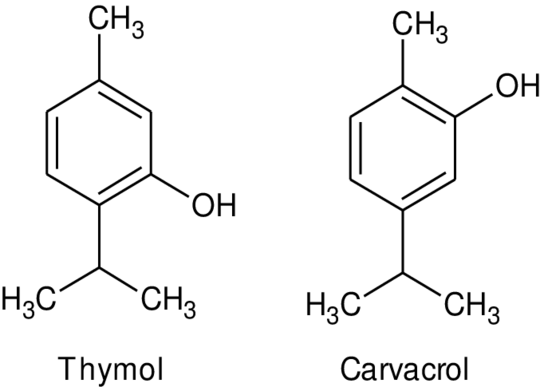
There are small subtle differences, which show the importance of the spatial arrangement in molecules. Thymol and carvacrol are terpenoid natural substances and represent structural isomers (constitutional isomers) of each other. Although both are often present in the same plants there are also differences in their occurrence in nature as dominant component of essential oils. Oregano, marjoram and savory are usually rich in carvacrol while thymol is found in high quantities in thyme, ajowan and basil.
The same but different
Constitutional isomers show the same general molecular formula but differ in the order of the atoms and in their bonds.
| Thymol | Carvacrol | |
|---|---|---|
| Other name | 2-Isopropyl-5-methyl-phenol | 5-Isopropyl-2-methylphenol |
| Molecular formula | C10H14O | C10H14O |
Dive deeper into the thymol and carvacrol compounds and discover their antimicrobial and antioxidant activities in part 2.
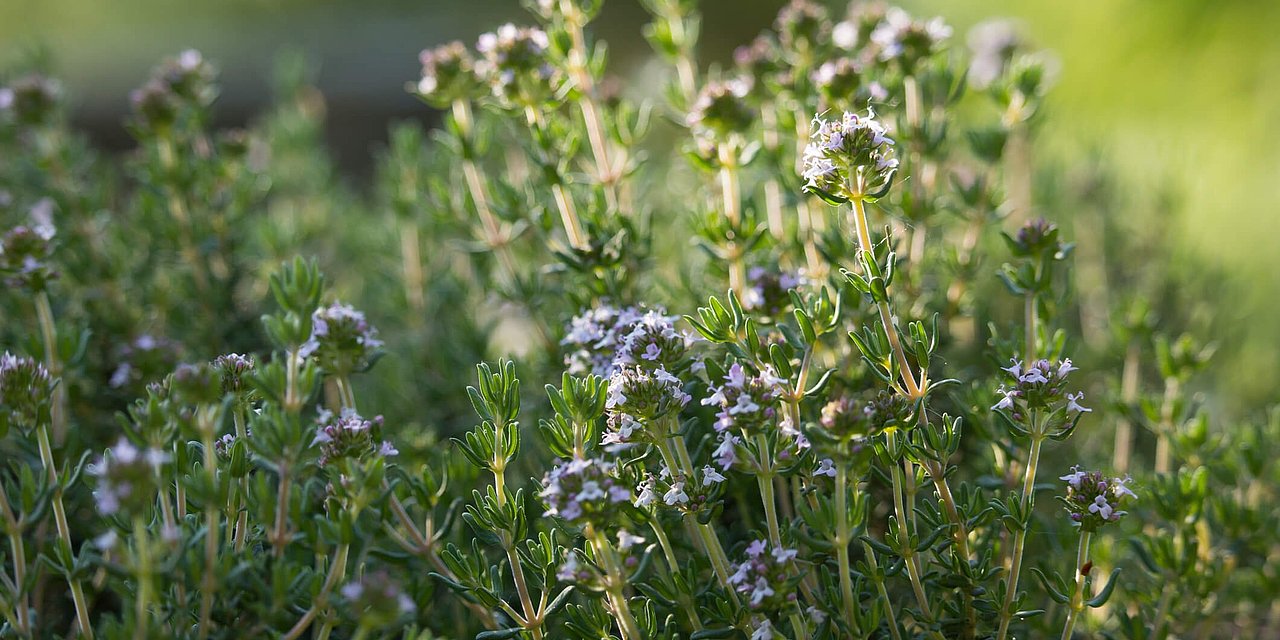

Elisabeth Rohrer
After her study in agriculture sciences at the university of natural resources and life sciences in Vienna, Elisabeth joined the Delacon team in December 2013 as Technical Communications Manager - a position, she always exerted with pleasure. Since 2021, her task areas have been extended and thus, she is also supporting colleagues in writing offside the technical focus as Content Manager. Elisabeth describes herself as a great animal and nature lover and prefers to spend her free time high up in the mountains with her little family, away from the hustle and bustle.

Tobias Aumiller
Scientific Lead and deputy Head of R&D at Delacon. In 2015, Tobias Aumiller joined the Delacon family as Research and Development Manager for Swine and Microbiology. He received his diploma in Technical Biology and completed his Ph.D. in animal nutrition at the University Hohenheim in 2015, focusing on feed-gut-microbiota interaction. In his leisure time Tobias loves playing table tennis and also participates in championships.










